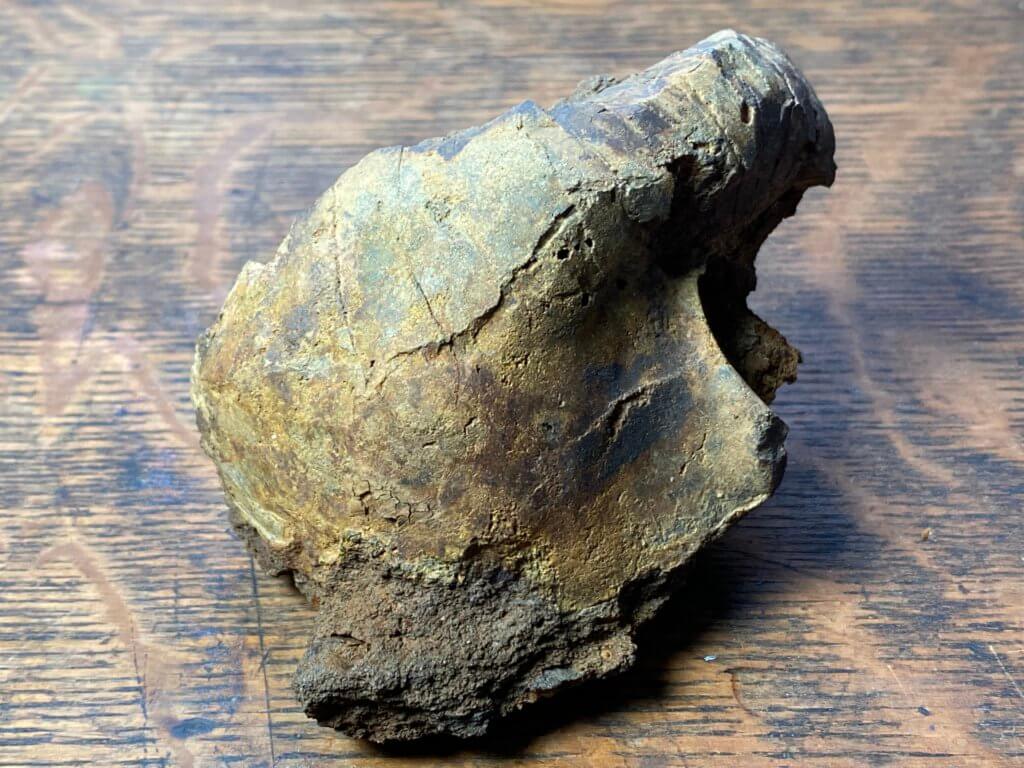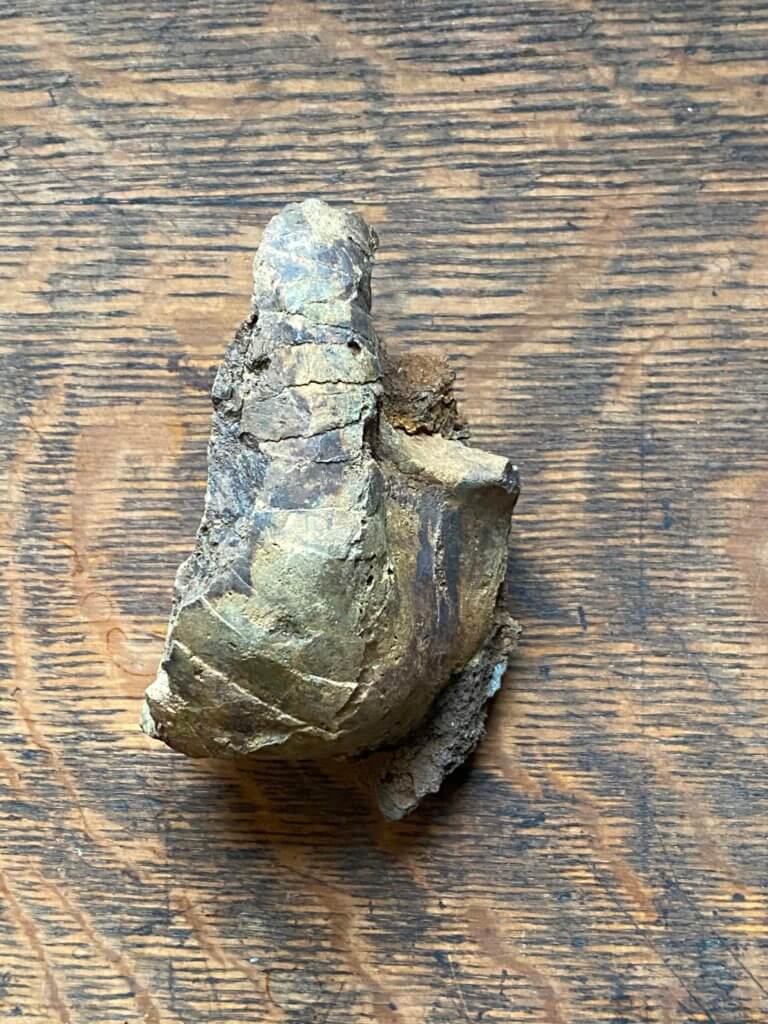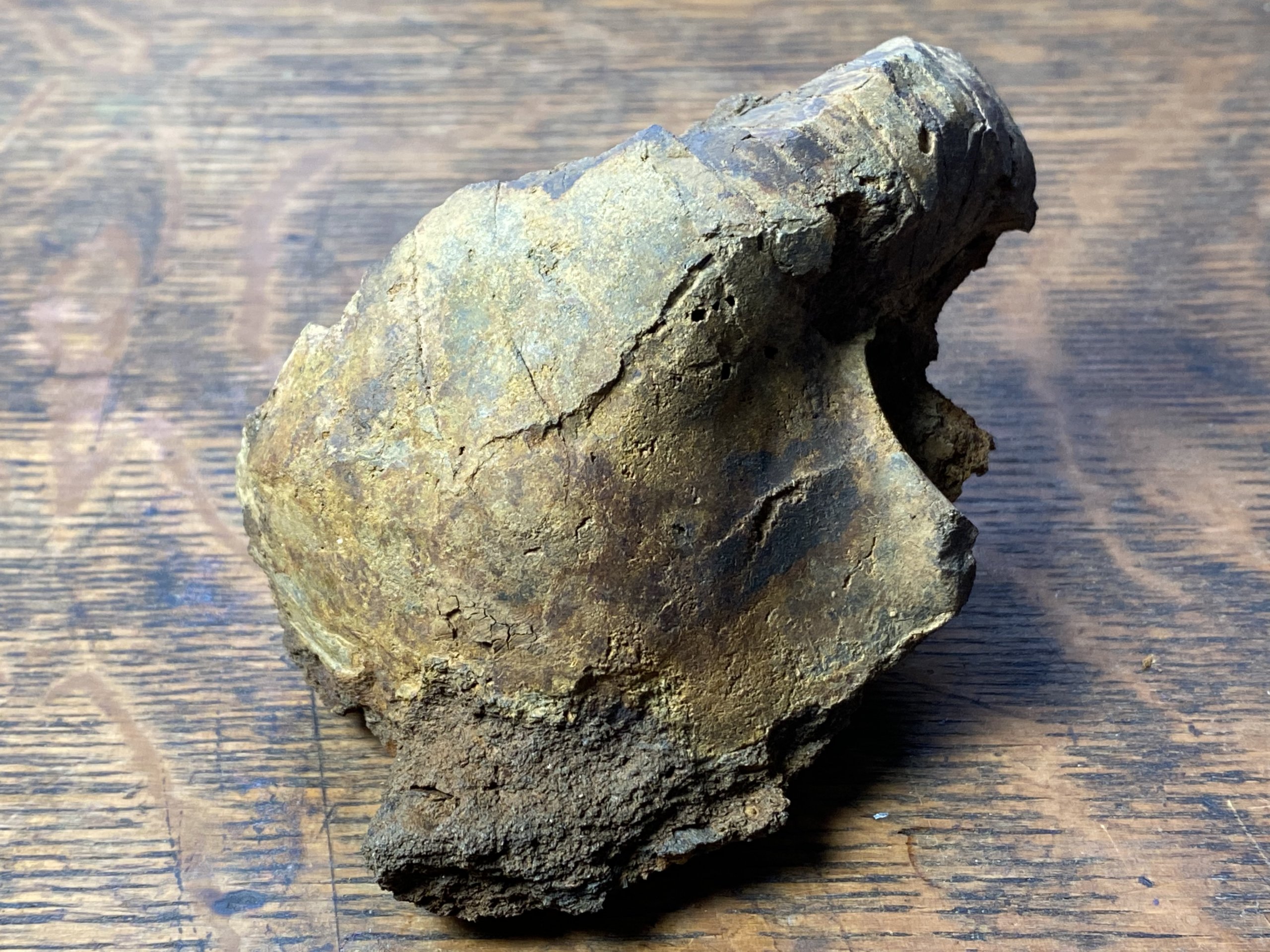This specimen of Solenochilus was an interesting find in softened Brush Creek limestone material. The limestone can often be bisected as discovered in the ground. This is likely from stress fracturing. In between the fractures, I have mostly found clay. But the margins on each boulder can be softened and develop what has been called a rhine of altered material around the rock. This material ranges from dark gray to a reddish color. It is very easy to work compared to unaltered limestone. I am able to remove large pieces using only a small chisel and a single hammer blow.
Catalog Number: CG-0159
After many smaller finds, I discovered this large cephalopod shell fragment in the rhine material. The shell appeared largely covered in mud and clay, but the shape was familiar. I set it aside as I attempted to find more specimens in this area. After I finished digging, I was able to clean the specimen off using clean water. I became pleasantly surprised at what was under the mud and clay.
CG-0159 – Solenochilus description

The specimen consists of one half of a phragmocone and body chamber, split on the venter line. There is no discernable siphuncle line, I suspect that the split omits this feature. Phragmocone suture marks are visible on the venter, the flank, and the umbilical shoulder. The body chamber preservation extends into the umbilical area, which may be part of a juvenile dorso-lateral spine. The surviving length as viewed down upon the venter is approximately 85 mm from body chamber termination to surviving phragmocone. The preserved body chamber lip is 3 cm in length, not considering it’s a concave curve.
The opposite side, where the venter is bisected, is unremarkable. Perhaps if I were to grind the surface flat, additional features such as suture marks would make an appearance. The flat bisected face has a small j-shaped impression 18 mm in length. This appears to indicate the location of more remains of the phragmocone. With how fragile the fossilized material is, it would not be advisable to polish this specimen in an attempt to show additional details.
There is an additional straight-shelled cephalopod embedded at the edge of the body chamber. In cross-section. it appears oval-shaped. It measures 6 mm by 4.5 mm with a visible septal opening on the chamber.
Specimen Weight
Of interest is the weight of the specimen. Compared to others, it feels light and non-dense. It weighs 170.9 grams. In comparison, CG-0081 weights 204.1 grams and appears to be smaller in volume. It absorbs water quite easily.

CG-0159, Solenochilus, 170.9 gm 
CG-0081, 204.1 gm
Additional Specimen Photos


Further Reading on Solenochilus
- 2020, Godlesky, C.N., Solenochilus, Fossils of Parks Township
- Sturgeon, M.T., Windle, D.L., Mapes, R.H., Hoare, R.D. 1997, “Bulletin 71: Pennsylvanian Cephalopods of Ohio”, Part 1 Nautiloid and Bactritoid Cephalopods, Ohio Division of Geological Survey

